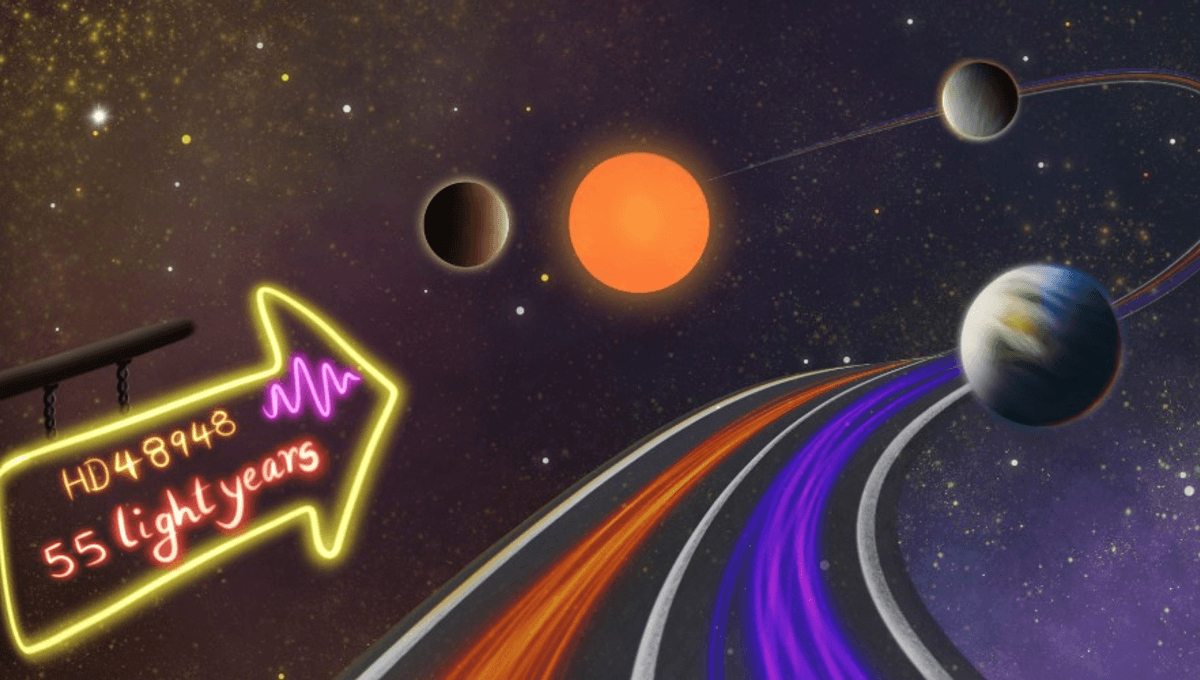
A relatively nearby K-type star called HD 48948 has been found to host three planets, each modestly larger than the Earth. The outermost of these is in the “habitable zone”, where temperatures are right for liquid water at the surface. More investigation is needed – particularly to confirm it is predominantly rock or water, not gas – but there is a good chance this could be rated as the closest known planet to Earth with a good chance of sustaining life.
New planets are being found at an astonishing rate, such that one needs to be special to get noticed. HD 48948 d shows every sign of qualifying. The vast majority of planets we have found are either gas giants with no chance to support life themselves (although moons might, if they have them) or are far too hot. Many fail on both counts.
Even the few planets that are the right size and average temperature often have problems that make life unlikely, although not necessarily impossible. These include being tidally locked so the same side always faces their star, and being exposed to flares that may well sterilize them. HD 48948 d probably avoids both fates, although the other planets discovered at the same time are certainly too hot. It’s the closest example of a so-called Super-Earth, a planet modestly larger than our home, that lies within its star’s habitable zone.
K-type stars have less mass than the Sun, and are consequently somewhat cooler and fainter, but they are more massive than the much more abundant M-type (red dwarfs). They’re sometimes called orange dwarfs since they are the brightest in that part of the spectrum.
HD 48948 has a mass 67 percent of the Sun’s and is 55 light-years away in Camelopardalis. It’s a very old star, its 11.5 billion-year life span having offered plenty of time for life to evolve around it. Ten years of observations reveal it wobbling on patterns that indicate it is being affected by the gravity of planets orbiting on periods of 7.3, 38, and 151 days.
Even with less luminosity than the Sun, a planet on a 7.3-day orbit would be baked far hotter than Mercury, and even the planet in a 38-day orbit would be more oven than home.
HD 48948 d is a different matter. Its orbital distance is similar to Venus, but around a star of this brightness, its temperature would be close to Earth’s, while also being far enough away that flares shouldn’t be a problem.
This isn’t a twin of Earth, however – its mass is estimated at 10.59 times our planet’s, give or take an Earth-mass. As far as we know, none of HD 48948’s planets transit across the face of their star from our perspective. Consequently, we don’t know their size, only the mass it would take to produce the gravitational effects we see on their star.
A planet of that mass could be a mini-Neptune ball of gas, not a super-Earth, which would be much less exciting. It may be some time before we can tell. Even if solid, its gravity would certainly be tiring.
Some previous reports of planets made using this method have been found to be spurious, the result of activity on the star itself. However, Dr Shweta Dalal of the University of Exeter and co-authors express confidence the methods of analysis they used have avoided this.
“This discovery highlights the importance of long-term monitoring and advanced techniques in uncovering the secrets of distant star systems. We are eager to continue our observations and look for additional planets in the system,” Dalal said in a statement.
The paper is published open access in Monthly Notices of the Royal Astronomical Society.
Source Link: Nearest Super-Earth In A Habitable Zone Orbit Announced